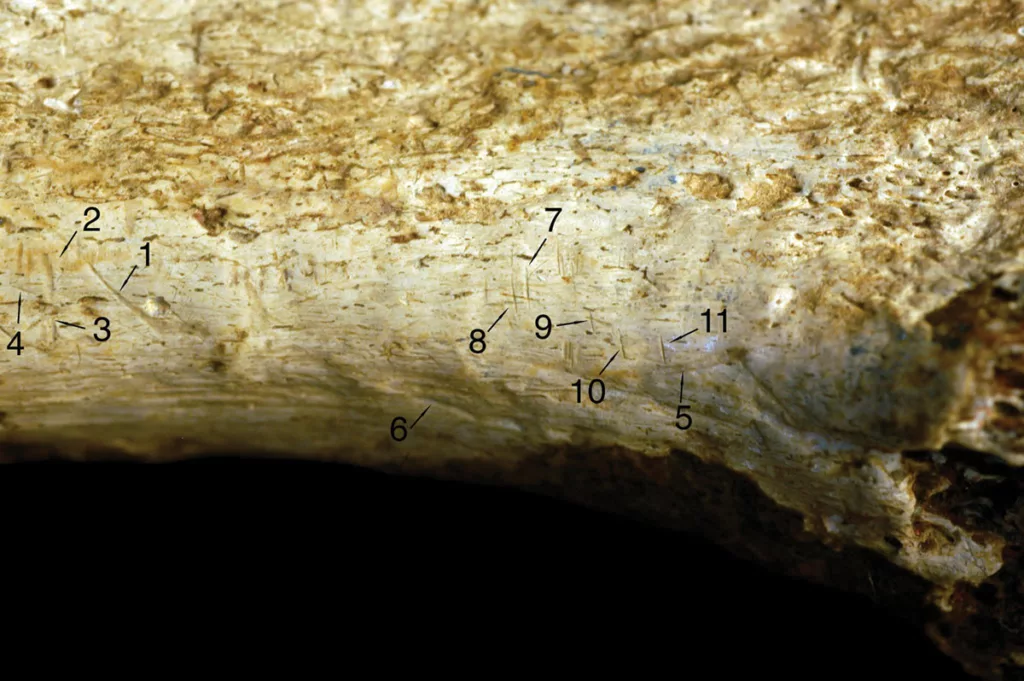Cannibalism is one of our oldest taboos, and it might be even older than previously believed.
A new study co-authored by researchers from the Smithsonian’s National Museum of Natural History and Colorado State University has identified the oldest decisive evidence of humans’ close evolutionary relatives butchering and likely eating one another.
The study identified nine cut marks on a 1.45-million-year-old shinbone from a relative of Homo sapiens found in northern Kenya. The marks were compared to almost 900 individual tooth, butchery, and trample marks created through controlled experiments. The analysis revealed that the cut marks were dead ringers for the damage inflicted by stone tools used in the butchering process at that time.
The 3D quantitative method behind this discovery was created by CSU Associate Professor Michael Pante, a paleoanthropologist who studies the feeding behavior of early members of the human genus.

Nine marks on ancient human bone identified as cut marks (1-4 and 7-11) and two identified as tooth marks (5 and 6) based on comparison with 898 known bone surface modifications. Photo courtesy of Jennifer Clark, Smithsonian National Museum of Natural History